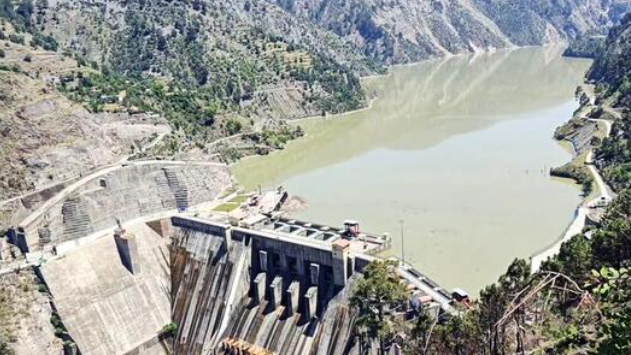

New Delhi: In an unprecedented escalation of tensions between the two nuclear-armed neighbors, India has implemented severe water restrictions against Pakistan by shutting down flow from key dams along the Indus river system. This decisive action comes in direct response to a deadly terrorist attack in Kashmir's Pahalgam that claimed dozens of tourists' lives on April 22.
Indian authorities have confirmed that de-silting operations at the Baglihar dam on the Chenab river have begun, with sluice gates now lowered to reduce downstream water flow to Pakistan by approximately 90%. A National Hydroelectric Power Corporation official, speaking on condition of anonymity, stated: "We have closed the gates of the Baglihar hydel power project. We had done de-silting of the reservoir and it has to be refilled. The process was started on Saturday."
The water restrictions extend beyond the Baglihar project. Officials have disclosed plans to conduct similar maintenance operations at the Kishanganga dam situated in Kashmir's Gurez valley, which will effectively halt all water flow downstream to Pakistan. Both dams have been contentious projects, with Pakistan previously raising objections to their designs under the framework of the Indus Water Treaty.
India's water policy shift occurs within a broader context of deteriorating bilateral relations. The decision to pause the historic Indus Water Treaty—a water-sharing agreement that has survived three wars and numerous conflicts since its signing in 1960—represents a significant diplomatic rupture. Indian authorities have explicitly stated they are "exploring all possible ways to use our river waters for the benefit of our citizens," signaling a potential permanent reconfiguration of regional water rights.
The water blockade coincides with other punitive measures against Pakistan. Within hours of Pakistan conducting tests of its surface-to-surface ballistic missile, India implemented a ban prohibiting ships flying the Pakistani flag from docking at any Indian port. These coordinated actions demonstrate India's multi-pronged approach to isolating Pakistan diplomatically and economically.
The Indus Water Treaty, mediated by the World Bank, has historically allocated the eastern rivers (Ravi, Beas, and Sutlej) to India and the western rivers (Indus, Jhelum, and Chenab) to Pakistan, with provisions allowing India limited usage of the western rivers. By restricting flow on the Chenab and Jhelum rivers, India is exercising maximum pressure within the technical boundaries of the agreement while simultaneously signaling its suspension.
Water security experts warn that this development could have far-reaching consequences for agricultural production and civilian water access in Pakistan, which relies heavily on the Indus river system for irrigation and domestic water supply. The timing—coming during the critical pre-monsoon period—maximizes the potential impact on Pakistan's agricultural sector.
International observers are closely monitoring this situation as it represents one of the most serious challenges to the stability of the Indus water management system in decades. With both nations possessing nuclear capabilities, the transformation of water resources into instruments of geopolitical pressure adds another volatile dimension to an already precarious regional security landscape.